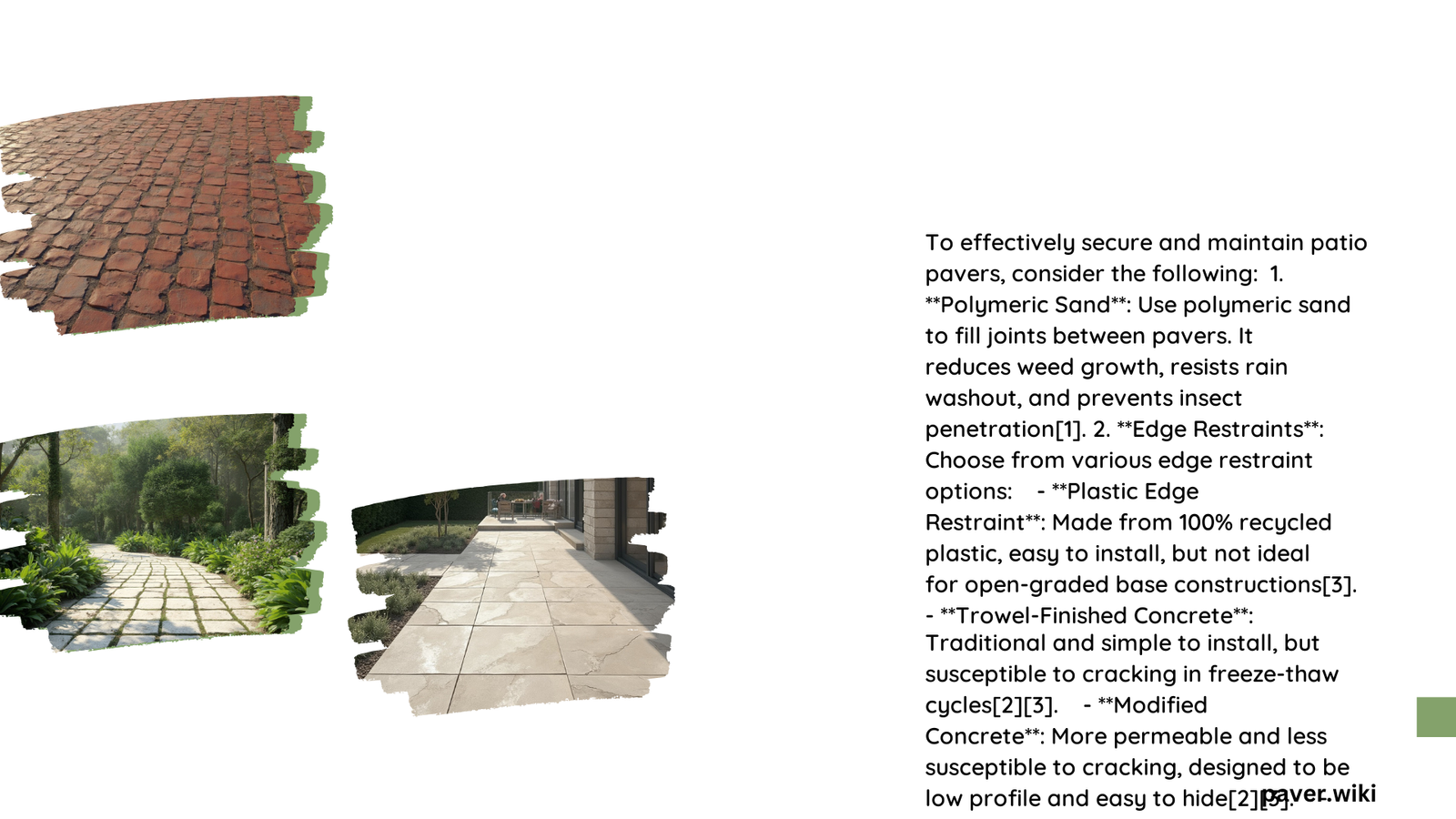Transforming the area around patio pavers requires strategic planning and thoughtful selection of materials and techniques. Homeowners often struggle with creating a cohesive, functional, and aesthetically pleasing border that prevents weed growth, manages water drainage, and enhances the overall landscape design. This comprehensive guide explores multiple approaches to solving common challenges associated with patio paver surroundings, offering professional insights into edging, drainage, and landscaping solutions.
What Materials Work Best for Patio Paver Edges?
Selecting the right edging material is crucial for maintaining the structural integrity and appearance of your patio pavers. Different materials offer unique benefits and aesthetic qualities.
Concrete Edging Options
- Durability: Highly resistant to moisture and heavy traffic
- Customization: Can be shaped to fit complex designs
- Cost Range: $3 – $10 per linear foot
| Material | Pros | Cons | Best Used For |
|---|---|---|---|
| Concrete | Extremely durable | Labor-intensive installation | Commercial and high-traffic areas |
| Plastic | Flexible and affordable | Less structural strength | Curved landscape designs |
| Metal | Sleek and sturdy | Limited design flexibility | Straight paver runs |
Drainage Solutions for Patio Perimeters
French Drain Installation
French drains provide an effective method for managing water around patio pavers. Key considerations include:
– Depth: 12-24 inches underground
– Cost: $10 – $30 per linear foot
– Effectiveness: Redirects water away from paver surface
Channel Drain Techniques
- Surface-mounted water collection system
- Directs water to central drainage points
- Cost range: $5 – $15 per linear foot
What Plants Complement Patio Pavers?

Ground Cover Selection
Ideal ground covers create visual interest and fill spaces between pavers:
– Creeping Thyme: Low-maintenance, drought-resistant
– Sedum: Succulent variety with minimal water requirements
– Vinca Minor: Spreads quickly, provides green coverage
Ornamental Grass Placement
Strategic grass placement adds texture and movement:
– Blue Oat Grass: Provides architectural structure
– Fountain Grass: Creates soft, flowing appearance
– Spacing: 12-24 inches between plants
Landscape Preparation Techniques
Soil Amendment Strategies
- Base Layer: Compacted gravel foundation
- Sand Bedding: Provides stable paver support
- Organic Matter: Improves soil drainage and structure
Installation Best Practices
- Proper base compaction
- Edge restraint implementation
- Consistent leveling techniques
Cost and Time Considerations
| Project Aspect | Estimated Duration | Cost Range |
|---|---|---|
| Basic Installation | 3-7 days | $500 – $3,000 |
| Complex Design | 2-4 weeks | $3,000 – $10,000 |
| Maintenance | Annual | $200 – $500 |
Professional Recommendations
- Prioritize drainage solutions
- Choose edging that matches landscape style
- Select low-maintenance plants
- Invest in proper base preparation
- Consider long-term aesthetic and functional goals
Pro Tip: Always consult local landscaping professionals for site-specific advice tailored to your climate and terrain.
Final Thoughts
Successful patio paver surroundings require a holistic approach combining functional drainage, attractive edging, and complementary landscaping. By understanding material options and implementation techniques, homeowners can create stunning outdoor spaces that enhance property value and aesthetic appeal.
